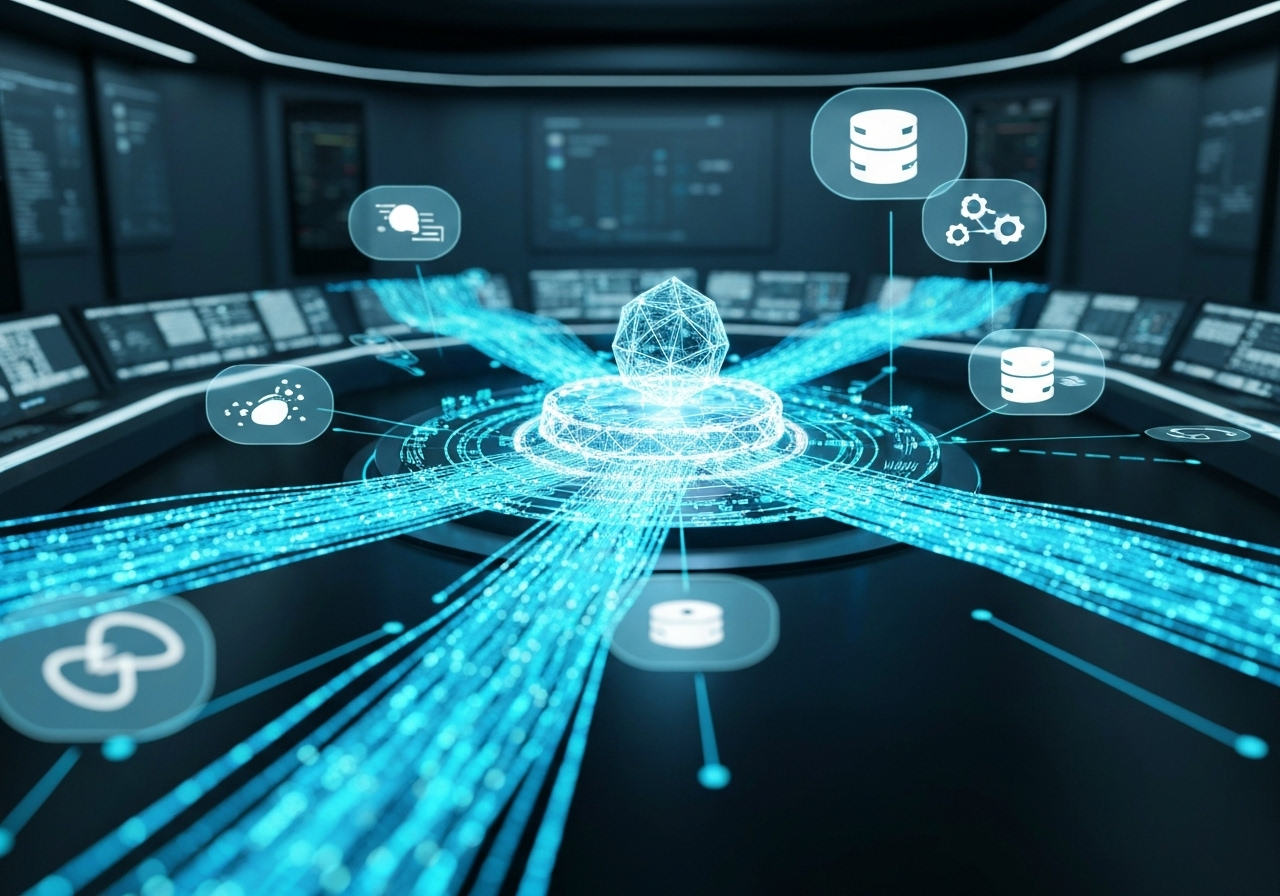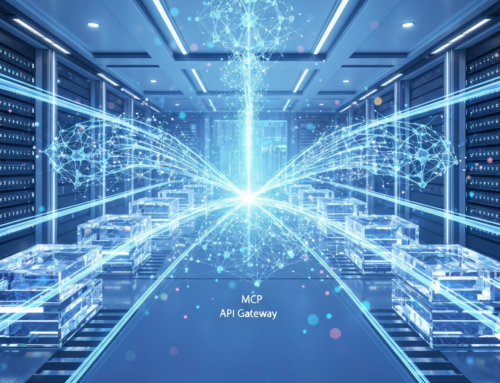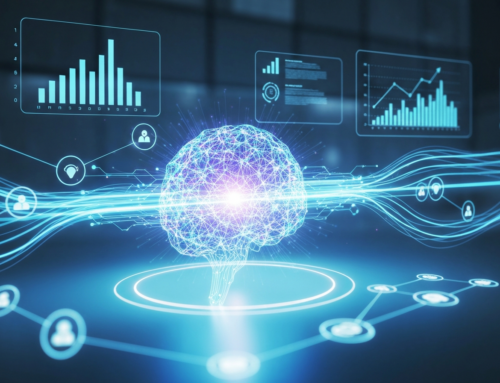The Limits of RPA and the Strategic Need for Intelligent Automation
For years, Robotic Process Automation (RPA) has served as the foundational technology for streamlining simple, high-volume, and repetitive business tasks. By automating fixed, rule-based workflows—such as data entry, form filling, and scheduled report generation—RPA delivered significant gains in efficiency and accuracy. However, as businesses grow more complex, the inherent limitations of traditional RPA are becoming starkly evident, bottlenecking progress toward true digital transformation.
Traditional RPA is constrained by its reliance on structured data and deterministic logic. This means that any deviation, or “exception,” immediately halts the automated process, requiring human intervention. This is the single most overlooked real-world lesson in automation: RPA’s success in automating the 20% of predictable tasks inadvertently creates a massive maintenance burden for the remaining 80% that involves judgment, interpretation, and unstructured inputs. The result is spiraling maintenance costs and diminished returns, proving that a static, rule-based approach cannot sustain the dynamic needs of modern enterprise.
The RPA Bottleneck: When Rules Break Down
RPA struggles acutely with:
- Unstructured Data: It cannot reliably interpret complex documents like invoices, emails, or contracts that contain variable layouts or free-form text.
- Process Change: Minor changes to a user interface or underlying business logic can instantly break an entire bot script.
- Decision-Making: It lacks the cognitive ability to assess context, weigh options, or autonomously resolve exceptions, relying entirely on explicit, pre-programmed instructions.
The Strategic Leap: How AI Agents for Process Automation Transcend Traditional Methods
The next generation of organizational efficiency is driven by the strategic implementation of **AI Agents for Process Automation**. This is not merely an evolution of RPA; it is a fundamental paradigm shift enabled by integrating Artificial Intelligence, specifically Large Language Models (LLMs), into the automation architecture. Where RPA mimics human actions, AI Agents mimic human intelligence and decision-making.
AI Agents differ from their robotic predecessors because they are equipped with cognitive capabilities. They can perceive their environment, maintain an internal state (memory), reason about complex goals, and select the appropriate tools or actions to achieve those goals. This capacity for autonomous, goal-oriented action fundamentally changes the scope of what can be automated.
Agentic frameworks move beyond simple task execution and redefine the landscape of digital services. They handle vast amounts of unstructured data with ease, continuously learn from new scenarios, and adapt their strategies on the fly without constant human oversight, effectively eliminating the manual exception handling that crippled traditional RPA deployments. The future of automation rests on this ability to incorporate flexible, intelligent decision-making into mission-critical workflows across diverse sectors.
The Foundation: Generative AI and LLMs as the Engine of Custom AI Solutions
The transformative power of contemporary automation lies in the fusion of automation frameworks with Generative AI and Large Language Models (LLMs). LLMs, such as GPT-4 or comparable models, serve as the cognitive engine for **AI Agents for Process Automation**, granting them the crucial abilities that traditional RPA bots lack.
The LLM’s Role in Process Automation
LLMs provide three core capabilities essential for intelligent automation:
- Contextual Understanding: They can interpret the intent behind natural language instructions, whether from a user prompt, an email, or a complex legal document. This allows agents to process highly unstructured data with human-like comprehension.
- Reasoning and Planning: LLMs can break down high-level objectives into sequential, actionable steps, dynamically determining the best path to execute a task using available tools and APIs.
- Knowledge Synthesis: They can access, summarize, and integrate information from disparate sources—databases, CRMs, web pages—to inform decisions during a workflow.
This integration marks a shift toward *Agentic RPA*, where the automation system is now capable of managing processes that require interpretation and judgment. LLMs are not just components; they are the intellectual core that elevates automation from static scripting to dynamic, responsive problem-solving.
Designing Autonomy: The Architecture of Agentic Workflows and Complex Task Execution
The true power shift in process automation is moving from “task automation” to “goal-oriented orchestration.” This expert insight confirms that successful enterprise AI systems are built on an architectural foundation that supports autonomy, often drawing inspiration from cognitive models.
Agentic workflows are characterized by a feedback loop—the agent acts, observes the result, reflects on the outcome against its goal, and then plans the next step. This self-correcting loop ensures robustness against unexpected errors or exceptions.
Key Components of an Agentic Architecture
To support this autonomy, an AI Agent architecture must include:
- The Planner/Orchestrator: A component, often powered by an LLM, that translates a high-level goal (e.g., “Process the customer’s return request”) into a multi-step execution plan.
- The Tool Kit (APIs): A library of accessible functions (APIs, Python code, n8n webhooks) that the agent can call to interact with the environment (e.g., sending an email, querying a database, or updating a record).
- Memory & Context: A mechanism to store conversation history, previous observations, and long-term business rules, allowing the agent to maintain context over complex, multi-step tasks.
This structure distinguishes Agentic AI from simpler AI agents that merely follow programmed instructions by enabling goal-setting and self-direction. The framework for Agentic RPA allows bots to simulate human-like reasoning and adapt in real-time, driving true autonomous decision-making across enterprise platforms like ERP, CRM, and HRIS to optimize business operations.
Transformative Applications: Automated Data Processing and High-Value Business Automation
The capabilities of AI Agents translate directly into high-value, enterprise-level applications, particularly in areas traditionally plagued by complexity, compliance, and manual data review.
Streamlining Financial & Compliance Workflows
In finance, agentic workflows can ingest vast quantities of semi-structured documents (e.g., invoices, receipts, regulatory filings), interpret their meaning, extract key data points, and validate compliance rules against internal policies—all autonomously. The convincing evidence for this advanced approach is compelling: prototype Agentic RPA systems in finance departments have demonstrated a 65% decrease in manual interventions and a 92% autonomous resolution accuracy for exception handling. This drastically reduces processing time and significantly mitigates the risk of human error in compliance and reconciliation tasks.
E-commerce and Customer Experience Automation
For businesses engaged in digital commerce, **AI Agents for Process Automation** are pivotal. They can connect the front-end sales platform with back-end logistics and CRM systems. For example, an agent can monitor customer feedback channels, instantly cross-reference order data, trigger refund processes in WooCommerce, or update inventory across Shopify and Magento platforms based on real-time data flow. This level of automated orchestration ensures seamless data integrity across all facets of the e-commerce solutions pipeline, from storefront to fulfillment. Automated agents can even draft personalized marketing responses based on sentiment analysis of recent customer support tickets.
Building the Ecosystem: Integrating AI Agents with Python, FastAPI, and n8n Workflows
While large, proprietary automation platforms are adopting agentic features, savvy enterprises are recognizing that custom-built solutions offer far greater flexibility, control, and integration potential—the unique angle for a definitive guide to process automation. By leveraging open-source tools and flexible development frameworks, companies can define their own agentic architecture perfectly tailored to their unique systems and business logic.
The Custom Automation Stack
A typical custom stack for building production-ready AI Agents involves:
- Python & FastAPI: Python serves as the backbone for agent development, utilizing LLM integration libraries like LangChain or specialized frameworks. FastAPI provides the necessary API endpoints, turning the Python-based AI Agent into a callable tool that can be used by other services. This allows the core intelligence to be containerized and scaled effectively.
- n8n/Make (Workflow Orchestration): Tools like n8n are indispensable low-code/no-code platforms for orchestrating complex workflows. They act as the “nervous system,” connecting the AI Agent’s decisions to physical actions across multiple enterprise tools. An n8n workflow can call the FastAPI endpoint for a decision, receive the next action (e.g., “update CRM record”), and execute that action using its pre-built integrations.
This method transforms internal systems into callable services. For instance, an agent designed to handle social media content creation can be built using Python and FastAPI and then seamlessly deployed and managed within an n8n workflow. The open-source nature of such a setup offers transparent logic, easier debugging, and full ownership, enabling sophisticated, scalable pipelines without vendor lock-in, as showcased in public AI automation projects on GitHub.
Future-Proofing Your Enterprise: The Role of AI Consulting and Machine Learning in Long-Term Strategy
The journey from traditional RPA to sophisticated **AI Agents for Process Automation** requires more than just technical deployment; it demands a strategic shift in how the enterprise views its operational technology. Future-proofing your enterprise involves integrating AI consulting expertise to bridge the gap between business needs and technical capabilities.
The Automation Continuum Strategy
Forward-thinking organizations are embracing the concept of the “Automation Continuum,” which involves leveraging Artificial Intelligence and Machine Learning (ML) to continuously optimize existing automation processes rather than replacing them outright. This means:
- Strategic Integration: Identifying which processes benefit from the reliability of RPA (structured data) and which require the cognitive power of AI Agents (unstructured data, decision-making).
- Continuous Optimization: Using ML models to analyze bot performance data, detect patterns in exceptions, and automatically suggest or implement workflow improvements.
- Scalable Governance: Establishing clear frameworks for the oversight of autonomous agents, ensuring compliance, security, and traceability of every decision made.
For organizations focused on accelerated digital growth, particularly those operating advanced platforms like WooCommerce, Magento, or Shopify, strategic guidance is critical. It ensures that the deployed AI agents are not only functional but are strategically aligned with long-term business objectives. By blending robust automation expertise with a deep understanding of machine learning and modern development stacks, Idea Forge Studios guides clients toward a future where operational efficiency is self-optimizing, adaptive, and a true source of competitive advantage.
Future-Proof Your Enterprise with Intelligent Automation
Ready to move beyond the limits of traditional RPA? Idea Forge Studios designs and deploys custom AI Agent solutions powered by LLMs, Python, and modern workflow orchestration (n8n) to deliver true operational autonomy and eliminate costly bottlenecks.
Take the next step toward a self-optimizing business:
Schedule a Strategic Consultation
Or contact our team directly:
Call: (980) 322-4500 |
Email: info@ideaforgestudios.com








Get Social